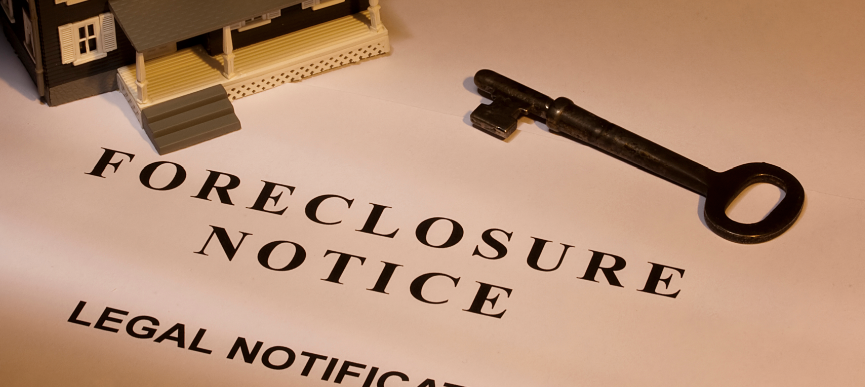
If you’ve received a foreclosure notice of default, it’s crucial to understand what’s happening and how you can respond. This document marks the beginning of a legal process where a lender seeks to reclaim property due to missed mortgage payments. The foreclosure notice of default can be intimidating and stressful, but by understanding the process, you’ll be better equipped to protect your rights and potentially resolve the situation before it worsens.
What is a Foreclosure Notice of Default?
In Antioch, CA, a foreclosure notice of default is a formal legal document filed by a lender to initiate the foreclosure process when the borrower has defaulted on their mortgage payments. In California, this document is usually filed after the homeowner has missed multiple payments, typically at least three months of non-payment. The lender uses this notice to inform the borrower, along with any other parties with legal interests in the property, that they intend to foreclose on the home.
This step is significant because it signals that the foreclosure process is moving forward, but it also provides a window of opportunity for homeowners and other interested parties to respond. Once the notice is issued, the borrower still has options to remedy the default, such as catching up on payments, negotiating with the lender, or exploring alternative solutions like a short sale.
Who Receives a Notice of Default?
A foreclosure notice of default isn’t just sent to the borrower. It is also delivered to any party with a financial interest in the property, including secondary lenders, contractors, and others who might have liens on the home. For instance, if there’s a second mortgage or unpaid contractor bills, these parties will receive the notice as well. This allows everyone with a vested interest to take action and protect their rights.
Additionally, California law mandates that the notice of default be made public. It must be posted in a newspaper, usually in the legal notices section, and also posted in a prominent place on the property, such as the front door. While this may feel invasive or embarrassing, it serves a vital purpose of transparency and accountability in the foreclosure process.
Why is the Foreclosure Notice of Default Important?
Historically, foreclosures could happen without much warning to homeowners. Before regulations were put in place, some property owners were blindsided by foreclosure actions, with little or no time to resolve the issue. Today, California law requires that homeowners be given fair warning and the opportunity to rectify the situation. The notice of default provides this formal warning and allows homeowners to explore options to avoid foreclosure.
This step in the foreclosure process ensures due process, giving homeowners time to challenge the foreclosure, work out a payment plan, or pursue other strategies to avoid losing their homes.
In fact, errors can still occur, even with these protections in place. For example, some banks have mistakenly foreclosed on the wrong properties, causing legal headaches for both the homeowners and the financial institutions. This is why the notice of default process is so important—it ensures all parties have time to address the situation before irreversible actions are taken.

Key Steps to Take if You Receive a Foreclosure Notice of Default
If you’ve received a foreclosure notice of default in Antioch, it’s essential to act quickly but thoughtfully. Here are some crucial steps to consider:
1) Stay calm and don’t panic.
Receiving a foreclosure notice can be one of the most stressful experiences a homeowner faces. The range of emotions it triggers—from fear to anger to confusion—is entirely normal. Fear of losing your home, anger at the situation, and a feeling of helplessness are all common reactions. However, while these emotions are understandable, it’s crucial not to let them drive your decision-making. Reacting impulsively, such as ignoring the notice or rushing into hasty decisions, can worsen the situation.
It’s important to remember that foreclosure is a process, not an immediate event. In California, foreclosure typically takes several months, and receiving a notice of default doesn’t mean the bank is coming for your home tomorrow. This delay offers a critical window for homeowners to evaluate their options and take action. Keeping your emotions in check will help you think clearly, strategize effectively, and prevent panic-driven mistakes, like selling your home for less than it’s worth or falling for foreclosure scams.
Taking a moment to breathe, assess the situation, and realize that you are not alone can help you maintain control over your actions. Many homeowners have successfully navigated this stressful period and managed to save their homes or negotiate a favorable outcome. You, too, can find a way through this by staying composed and making informed decisions.
2) Educate Yourself About the Process
One of the best ways to combat fear and anxiety is through education. The foreclosure process may seem overwhelming at first, but breaking it down into understandable steps will empower you to make better decisions. In California, after a notice of default is filed, the homeowner enters a reinstatement period, which gives you an opportunity to bring your mortgage current by paying the missed payments, late fees, and other costs incurred due to the default. This period lasts for at least 90 days, giving you time to explore financial solutions and avoid the trustee sale, which is the final step in the foreclosure process.
The key here is to understand that the law is on your side in providing opportunities to rectify the situation. Familiarizing yourself with the timeline and knowing the specific requirements of California’s foreclosure laws—such as how long you have to respond and what steps the lender must take—can make a significant difference. You’ll be better equipped to identify and pursue options like loan modifications, forbearance, or even a short sale.
Taking the time to research local laws and foreclosure procedures will help demystify the process. There are many online resources, government websites, and foreclosure counseling services that can guide you. Understanding your rights and the lender’s obligations ensures that you can respond appropriately, avoid scams, and make the best possible decisions for your situation.
3) Seek Legal and Financial Advice
Navigating the legal and financial aspects of foreclosure on your own can be overwhelming and fraught with risks. California’s foreclosure laws are complex, and every situation is unique. Seeking professional advice is crucial to protect your rights and avoid costly mistakes. A qualified attorney who specializes in foreclosure law can help you understand your legal standing, evaluate any paperwork you’ve received, and potentially identify errors in the lender’s foreclosure process.
In addition to legal advice, financial counseling can provide a clearer picture of your options. HUD-approved housing counselors offer free or low-cost advice and can help you understand various relief programs, such as loan modifications, refinancing options, or forbearance plans. These professionals can also negotiate on your behalf with your lender, improving your chances of reaching an agreement that allows you to stay in your home or at least avoid a full foreclosure.
Moreover, non-profit organizations and government agencies offer programs to help struggling homeowners, and they often provide resources you may not be aware of. Seeking help early in the process gives you more time to explore all possible solutions, such as qualifying for government assistance programs like the Home Affordable Modification Program (HAMP) or other local aid initiatives designed to prevent foreclosure.
4) Learn your options.
Receiving a foreclosure notice of default is a stressful experience, but it’s important to know that it doesn’t mean all is lost. Even at this stage, homeowners in Antioch, CA, have several viable options to potentially avoid foreclosure. By acting quickly and understanding the choices available, you can develop a plan to resolve the situation and protect your home.
1. Loan Modification
One of the most common options for homeowners facing foreclosure is a loan modification. This involves renegotiating the terms of your existing mortgage to make payments more manageable. A loan modification can include changes to the interest rate, the term of the loan (extending it to lower monthly payments), or even a reduction in the principal balance in some cases. The goal is to create a new repayment structure that works within your financial means, allowing you to catch up on missed payments while avoiding foreclosure.
Lenders are often willing to consider loan modifications because they would prefer to recover the loan than go through the costly and time-consuming process of foreclosure. You’ll typically need to demonstrate financial hardship and provide proof of income, bank statements, and other documentation to show that you can handle the new loan terms. Each lender has different requirements and processes, so working with a foreclosure attorney or housing counselor can help you navigate the application process successfully.
2. Forbearance
Forbearance is another option that can temporarily provide financial relief. With a forbearance agreement, the lender agrees to reduce or suspend your mortgage payments for a set period of time. This is especially helpful if you’re facing temporary financial difficulties, such as job loss, medical expenses, or other unexpected hardships.
Forbearance isn’t a permanent solution, but it gives you breathing room to get back on track financially. At the end of the forbearance period, you’ll need to repay the missed payments, either by spreading them out over time or by making a lump-sum payment. Lenders may be flexible in structuring the repayment terms, and you may even be able to negotiate a loan modification after the forbearance period if you’re still unable to resume full payments.
3. Short Sale
A short sale may be an option if you owe more on your mortgage than your home is worth and you don’t have the means to catch up on payments. In a short sale, the lender agrees to allow you to sell the property for less than the outstanding balance of your loan. While this means you won’t make any profit from the sale, it can help you avoid foreclosure and the long-term damage it can do to your credit score.
A short sale requires lender approval, and you’ll need to work closely with your real estate agent and lender to get the process moving. The lender must agree to accept the sale proceeds as full settlement of the debt, even though they are less than what is owed. One key benefit of a short sale is that it typically has less of a negative impact on your credit than a foreclosure, and it allows you to move on more quickly.
4. Deed in Lieu of Foreclosure
If you’re unable to sell your home through a short sale and can’t catch up on payments, you might consider a deed in lieu of foreclosure. This option allows you to voluntarily transfer ownership of your home to the lender to satisfy the mortgage debt. Essentially, you give up the property in exchange for the lender releasing you from further obligations under the loan.
While this option doesn’t let you keep your home, it can be a way to avoid the more damaging effects of foreclosure on your credit and financial future. However, it’s important to note that the lender may not always agree to a deed in lieu of foreclosure, especially if there are multiple liens or other complicating factors on the property. Still, if your lender is willing, this option can provide a relatively clean break from the mortgage and help you move forward.
5) Communicate with Your Lender
One of the most critical steps in avoiding foreclosure is maintaining open and honest communication with your lender. While it may feel intimidating to talk to your lender about your financial difficulties, being proactive can significantly improve your chances of reaching a resolution. Lenders are not in the business of owning homes—they want to recoup their money. Foreclosure is costly and time-consuming for them as well, so they are often open to alternative solutions if it means they will get paid.
Start by informing your lender as soon as you realize you may not be able to make your payments. Explain your situation, and ask about available options, such as a loan modification, forbearance, or other relief programs. Lenders often have departments specifically dedicated to helping homeowners in distress, and many are willing to work with you to find a solution.
Keep records of all your communications with the lender, including emails, letters, and phone calls. If you reach an agreement, make sure to get it in writing to protect yourself legally. Regular communication helps build goodwill with your lender and shows that you’re making a good-faith effort to resolve the issue. Even if a solution seems out of reach, continued dialogue may open doors to options you hadn’t previously considered.
Exploring your options and maintaining communication with your lender are essential steps in avoiding foreclosure. Whether through loan modification, forbearance, a short sale, or a deed in lieu of foreclosure, there are several paths available to help you navigate this challenging situation. The sooner you act and engage with your lender, the better your chances of finding a solution that works for both you and the lender.
Want to know more?

